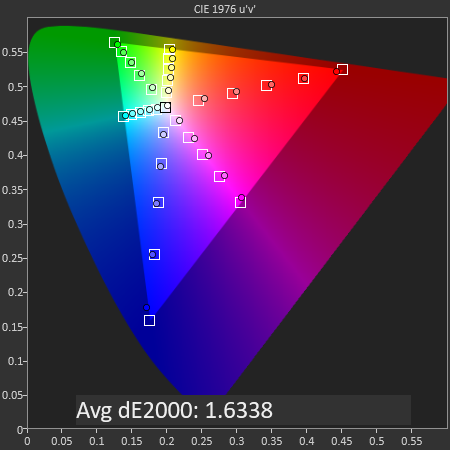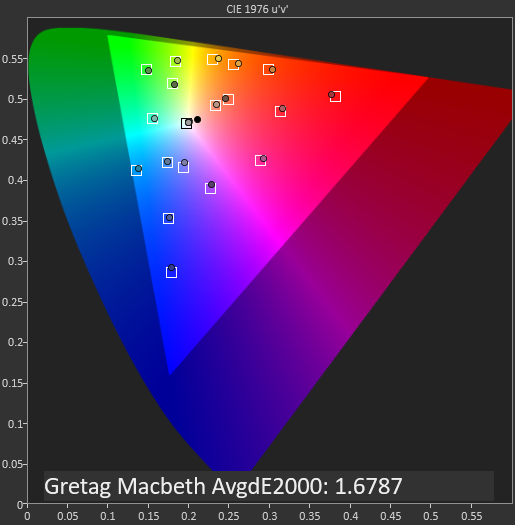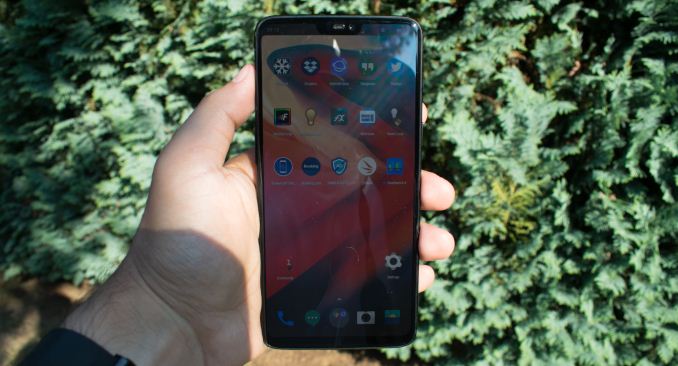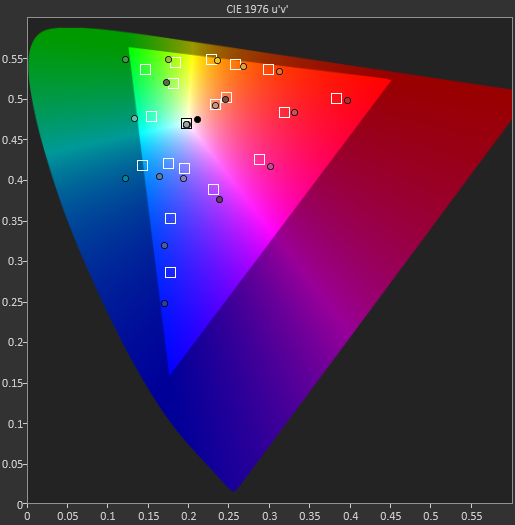The OnePlus 6 Review: Among The Best Of 2018
by Andrei Frumusanu on July 27, 2018 8:30 AM EST- Posted in
- Mobile
- Smartphones
- OnePlus
- OnePlus 6
Display Measurement & Power
The OnePlus 6 comes with a 6.22” diagonal 19:9 Samsung AMOLED screen sporting a 2280 x 1080 resolution. The first impressions of the screen are generally excellent, be it that the resolution is quite stretched at this large size.
There’s no Android 8.1 colour management available for the screen, while it does support simple HDR content. OnePlus instead relies of various pre-defined colour profiles which can be found in the display settings:
The default mode is a very saturated wide gamut mode not particularly targeting any specific colour space. The firmware provides two accurate modes options representing the sRGB and DCI-P3 colour spaces. The Adaptive mode is also very much a viable alternative that again isn’t accurate to any standard, but comes with good compromises between higher colour saturation and more accurate skin tones.
As always, we thank X-Rite and SpecraCal, as measurements are performed with an X-Rite i1Pro 2 spectrophotometer, with the exception of black levels which are measured with an i1Display Pro colorimeter. Data is collected and examined using SpectraCal's CalMAN software.

Standard (sRGB)
DCI-P3 Adaptive
Starting off with the greyscale measurements we see that the screen fares quite well in terms of accuracy, albeit the colour temperature both in the sRGB and DCI-P3 modes are slightly too warm coming in at 6350K; the Adaptive mode is the only one which comes in at perfect whites of 6586K resulting in one of the bets greyscale dE2000 scores at 1.15.
 SpectraCal CalMAN
SpectraCal CalMAN
sRGB Greyscale Comparison
 SpectraCal CalMAN
SpectraCal CalMAN
Adaptive Greyscale Comparison
In terms of brightness, the screen goes up to a maximum of 420cd/m² in manual mode which is essentially standard for what we’ve seen over the years in terms of AMOLED screens. The more disappointing discovery here is that there’s no high brightness mode under default conditions and it can only be enabled at low-level driver interfaces. In effect this puts the OnePlus 6 at a visible brightness disadvantage in bright conditions, not least because of the lack of raw brightness, but also because it’s not adapting to the artificial low gamma and high saturation colour profiles that that vastly improves sunlight legibility usually found in other AMOLED devices.

 SpectraCal CalMAN
SpectraCal CalMAN
sRGB Mode / DCI-P3 Mode
The gamut and saturations accuracies for the sRGB and DCI-P3 modes are excellent, with only very slight deviations most prominent in magenta colours. In the DCI-P3 mode it also looks like OnePlus undershot the maximum chromacity for reds as it doesn’t quite reach the full gamut of the colour space – there’s also slight oversaturations in both profiles at the lower red levels meaning the colour compression on that channel is perfectly linearly configured.

 SpectraCal CalMAN
SpectraCal CalMAN
sRGB Mode / DCI-P3 Mode
In the Gretag Macbeth charts which showcase common colour tones, both sRGB and DCI-P3 profiles perform very well with dE2000 of 1.67 and 1.87, while not perfect, it will be mostly unperceivable to most users in daily usage.
 SpectraCal CalMAN
SpectraCal CalMAN
sRGB GMB Comparison
 SpectraCal CalMAN
SpectraCal CalMAN
DCI-P3 GMB Comparison
The Adaptive mode is again extremely interesting as it doesn’t really adhere to any one colour space, and it’s something we most recently saw implemented in the MIX 2S; it’s a wide gamut colour space (DCI-P3), however skin tones are mapped to the sRGB space. This gives best compromise of bringing vivid colours to objects while attempting to display accurate skin tones. Given that this mode also has the single best pre-defined white-point, I think it’s generally the best alternative for most users.

SpectraCal CalMAN
Adaptive GMB Comparison
Overall the OnePlus 6 is an excellent screen with only two weaknesses; one of not having a high brightness mode at disposal to the user even though the hardware is capable of it, and the second point being that the resolution of the screen being rather stretched out for its form-factor.
In past OnePlus as well as most recent devices reviews we’ve brought up the point of resolution several times; as we’ll see in the battery life section there is effectively no disadvantage to 1440p AMOLED screens in terms of power as their emissive nature isn’t really affected by luminosity power efficiency deficiencies at higher resolutions the same way LCDs are, and the computational overhead of the higher resolution seems to be minimal.
What a 1440p screen would greatly differ in though is pricing, and here maybe OnePlus just isn’t ready to justify the increased component cost for devices that aim to be the best possible value.














90 Comments
View All Comments
Teckk - Friday, July 27, 2018 - link
Using the phone from just over a month - great display and battery life. Pretty impressive camera for my occasional use. The update policy changed recently if I'm not wrong, were the older phones (X, 3, 3T) supported this well with upgrades?notashill - Friday, July 27, 2018 - link
The last 2 security patches for the OP3/3T were released 4 and a half months apart. The release pace has been very inconsistent but there are a large number of betas for some reason.The X only got one major version upgrade... to a version that was already out before the phone was released. The 3T got 2 major version upgrades... and the first one was to a version that was already out before the phone released. Supposedly it's going to get 8.1 eventually. They did live up to the promise of releasing Nougat in 2016 by releasing it on December 31.
mmrezaie - Friday, July 27, 2018 - link
I would like to see a review of software updates. I think One Plus started good but now it has even worst track record than Samsung. I think this part is more important for me rather than CPU performance which is something you get like basically every other company phones of that year.notashill - Friday, July 27, 2018 - link
They posted a Software Maintenance Schedule a few weeks ago claiming 24 months of "Regular Software Maintenance" which includes major version upgrades and bi-monthly security patches followed by another 12 months of "Software Security Maintenance" with bi-monthly security patches.And yet, OP3T was released November 2016 and they are not going to update it to P.
ACE76 - Friday, July 27, 2018 - link
Android P isn't out yet...and its probably going to be released around September this year so expecting the 3/T to get it is stupid.notashill - Friday, July 27, 2018 - link
Obviously P isn't out yet, I did not say I was expecting them to release it before Google. They have already said they are never going to release it for the 3/3T.mmrezaie - Thursday, August 2, 2018 - link
It is stupid to not expect these companies releasing updates for their phones and turn them into paperweights.WPX00 - Monday, July 30, 2018 - link
The 3/T has just been confirmed for P.notashill - Tuesday, July 31, 2018 - link
Yes I just saw this, very happy that they changed their minds about it (they had in fact already announced that Oreo would be the last major update). I hope this is a real turnaround for the company and they start taking updates seriously because OP's hardware is great but I have been rather disappointed with their software to date.SpaceRanger - Friday, July 27, 2018 - link
Is the battery replaceable or does the back cover require surgery to remove?